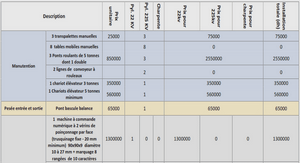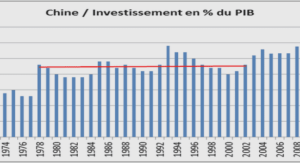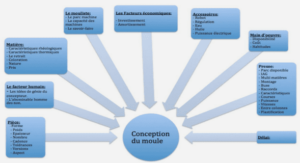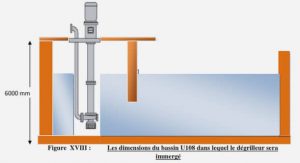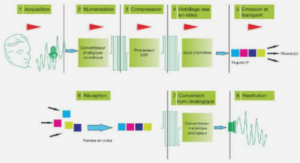Etude de la canicule européenne de 2003 avec les
données aéroportées MOZAIC
Air pollution during the 2003
This study presents an analysis of both MOZAIC profiles above Frankfurt and Lagrangian dispersion model simulations for the 2003 European heat wave. The comparison of MOZAIC measurements in summer 2003 with the 11-year MOZAIC climatology reflects strong temperature anomalies (exceeding 4 C) throughout the lower troposphere. Higher positive anomalies of temperature and negative anomalies of both wind speed and relative humidity are found for the period defined here as the heat wave (2–14 August 2003), compared to the periods before (16–31 July 2003) and after (16–31 August 2003) the heat wave. In addition, Lagrangian model simulations in backward mode indicate the suppressed long-range transport in the mid- to lower troposphere and the enhanced southern origin of air masses for all tropospheric levels during the heat wave. Ozone and carbon monoxide also present strong anomalies (both +40 ppbv) during the heat wave, with a maximum vertical extension reaching 6 km altitude around 11 August 2003. Pollution in the planetary boundary layer (PBL) is enhanced during the day, with ozone mixing ratios two times higher than climatological values. This is due to a combination of factors, such as high temperature and radiation, stagnation of air masses and weak dry deposition, which favour the accumulation of ozone precursors and the build-up of ozone. A negligible role of a stratospheric-origin ozone tracer has been found for the lower troposphere in this study. From 29 July to 15 August 2003 forest fires burnt around 0.3×106 ha in Portugal and added to atmospheric pollution in Europe. Layers with enhanced CO and NOy mixing ratios, advected from Portugal, were crossed by the MOZAIC aircraft in the free troposphere over Frankfurt. A series of forward and backward Lagrangian model simulations have been performed to investigate the origin of anomalies durCorrespondence to: M. Tressol (marc.tressol@aero.obs-mip.fr) ing the whole heat wave. European anthropogenic emissions present the strongest contribution to the measured CO levels in the lower troposphere (near 30%). This source is followed by Portuguese forest fires which affect the lower troposphere after 6 August 2003 and even the PBL around 10 August 2003. The averaged biomass burning contribution reaches 35% during the affected period. Anthropogenic CO of North American origin only marginally influences CO levels over Europe during that period. 1 Introduction Summer 2003 was one of the hottest in the history of Western Europe, with surface temperature exceeding by 2.4 C the average surface temperature reported for the 1901–1995 period (Luterbacher et al., 2004). Over Central Europe, the mean air temperature anomalies at 2 m for June to August 2003 with respect to the 1958–2001 period were maximum over France and the Alpine region, and they ranged from 3 C to 6 C (Grazzini et al., 2003). In France, observed average temperature in Paris for summer 2003 was 3.6 C above normal (Bessemoulin et al., 2004). Not only temperatures reached exceptional high levels, but also both the number of consecutive days during which temperatures exceeded the seasonal average and the spatial extent of the heat wave episode have never been reported before (Trigo et al., 2005). In August, the temperature increase peaked during the first two weeks due to a strong amplification of Rossby waves that reinforced the pre-existing anticyclone over Europe (Grazzini et al., 2003; Trigo et al., 2005). The long clear sky periods associated with the blocking conditions contributed to the increase in solar radiative heating over Europe (Garc´ıaHerrera et al., 2005). Anomalous anticyclonic conditions during summer led to an increase in the monthly mean daily Published by Copernicus Publications on behalf of the European Geosciences Union. 2134 M. Tressol et al.: Pollution during 2003 European heat wave observed solar radiation at the ground of 1 kWh m−2 (+20%) with respect to the mean value for the 10 past years (Cros et al., 2004). Whether the nature of these anomalies is exceptional or whether it is a signal of changes in the climate distribution is still a debate. Recent studies based on regional climate modelling suggest that the summer 2003 could be a normal summer in the coming decades (Beniston, 2004; Schar et al. ¨ , 2004). Based on meteorological records and mesoscale modelling, Vautard et al. (2007) emphasized the link between winter rainfall deficits in Southern Europe and the heat spreads northward throughout Europe in early summer. Under extreme meteorological conditions of the 2003 heat wave, the chemical processes leading to ozone formation are perturbed compared to periods with more typical temperatures. The high temperature influences summer ozone because of its link with high radiation, stagnation of the air masses and thermal decomposition of peroxyacetylnitrate (PAN) (Sillman and Samson, 1995). Radiation favours photolysis of NO2, ozone and carbonyls yielding radical formation with subsequent involvement in ozone production. Stagnation of air masses allows the accumulation of pollutants in the planetary boundary layer (PBL) and in the residual layer during the night. Based on surface observations and trajectory analysis, Solberg et al. (2008) pointed out the impacts of these extremely high temperatures on air pollution and the extended residence time of the air parcels in the boundary layer, which are important factors for enhanced ozone production. Lee et al. (2006) established that the initial morning rises in ozone during the episode over London were caused by the collapse of the inversion layer and entrainment of air from aloft in the nocturnal residual layer polluted on a regional scale. Increased temperatures and solar radiation favoured biogenic emissions of isoprene with a potential for enhanced ozone chemistry in the boundary layer (Lee et al., 2006). High temperature and spring to summer precipitation deficit reduced ozone dry deposition (Vautard et al., 2005). All these processes favour the photochemical production of surface ozone and its accumulation. The differences in ozone concentrations during the heat wave period compared to the rest of August 2003 were confirmed by observations at surface European networks (Vautard et al., 2005; Solberg et al., 2008). Ozone concentration exceeded the public information threshold (1 h ozone concentration >180µg m−3 or 84 ppbv) in 86% of the French survey pollution network (Elichegaray et al., 2003) and in 68% of European stations (Fiala et al., 2003). In Switzerland, the measured daily ozone maximum was 15 ppbv higher than in the reference period summer 1992–2002 (Ordonez et al., 2005). In addition, the high temperatures and exceptional drought led to extensive forest fires on the Iberian Peninsula (Elias et al., 2006; Lyamani et al., 2006a,b; Hodzic et al., 2006, 2007). Solberg et al. (2008) suggested that fires contributed to the peak of ozone ground value observed in Northern Europe in August 2003. Pace et al. (2005) used MODIS observations between 2000 and 2004 to demonstrate that the summer 2003 forest fire aerosol episode was the longest and covered the largest area ever recorded. In a modelling study, wild fires caused an increase of PM10 over several regions in Europe by 3µg m−3 to 5µg m−3 for the Southern Mediterranean basin and the Benelux (Hodzic et al., 2007). The biomass burning aerosol layer in the mid troposphere was shown to produce a large increase in the heating rate of 2.8 K day−1 at 20 solar zenith angle within the biomass burning aerosol layer (Pace et al., 2005). Over Western Europe the smoke aerosol radiative forcing during August 2003 varies between 5 W m−2 and 25 W m−2 with the highest value in the presence of the smoke plume. Wildfire aerosols participate to increase the atmospheric stability and to enhance hot and dry conditions during summer 2003 (Pace et al., 2005; Hodzic et al., 2007). The objective of this paper is to investigate for the first time the vertical extension and the origins of pollutants during the 2003 heat wave with a set of 162 profiles of ozone, carbon monoxide and relative humidity performed from 16 July to 31 August 2003 by 3 MOZAIC airliners over Frankfurt (Measurements of OZone, water vapour, carbon monoxide and nitrogen oxides by Airbus In-service airCraft, http:// mozaic.aero.obs-mip.fr/web/), (Marenco et al., 1998). First, the main characteristics and the anomalies of meteorological parameters (temperature, wind speed, relative humidity) and of reactive gas concentrations (ozone, carbon monoxide and total nitrogen oxide) in vertical profiles above Frankfurt are investigated in relation to the meteorological situation and to the climatology. Then a Lagrangian dispersive model is used to investigate the origins of the main anomalies of pollutants during the episode. Section 2 describes the methods and measurements used in this paper. The meteorological situation is described in Sect. 3. Based on MOZAIC measurements and back-trajectory calculations, a description of the vertical extension of chemical tracers is documented in Sect. 4 together with the investigation of their origins. Section 5 provides a discussion on the relative contribution of forest fires versus other anthropogenic emissions to the CO levels observed by the MOZAIC aircraft in Frankfurt.
Method
MOZAIC measurements
Five commercial airliners were equipped by the MOZAIC program (Marenco et al., 1998) with ozone (O3) and relative humidity (RH) instruments since 1994, and a carbon monoxide (CO) analyser was added in 2001. One aircraft carries an additional instrument to measure total odd nitrogen (NOy) since 2001. Measurements are taken from takeoff to landing, except for NOy which is not measured in the lower troposphere during descents and in the whole troposphere during ascents. Based on the dual-beam UV absorption principle (Thermo-Electron, Model 49-103), the ozone Atmos. Chem. Phys., 8, 2133–2150, 2008 www.atmos-chem-phys.net/8/2133/2008/ M. Tressol et al.: Pollution during 2003 European heat wave 2135 measurement accuracy is estimated at ± (2 ppbv+2%) for a 4 s response time (Thouret et al., 1998). Based on an infrared analyser, the carbon monoxide measurement accuracy is estimated at ±(5 ppbv + 5%) for a 30 s response time (Nedelec et al., 2003). A special airborne humidity sensing device is used for measuring relative humidity and temperature of the atmosphere (Helten et al., 1998). Measurements of total odd nitrogen are described in Volz-Thomas et al. (2005) and in Patz et al. ¨ (2006). Measurements for more than 26 000 long-haul flights are recorded in the MOZAIC data base (http://mozaic.aero.obs-mip.fr/web/) that is free-access for scientific use. The summer period from 16 July to 31 August 2003 is analysed with respect to the MOZAIC climatology based on an 11-year dataset (1994–2004). During the episode of the heat wave (defined further down from 2 to 14 August 2003), deviations from the climatology will be referred as anomalies. We have chosen the MOZAIC data over Frankfurt airport because of its central location within the 2003 heat wave pattern and the steadily frequency of MOZAIC traffic (>2 vertical profiles per day). The interest of MOZAIC data over Paris is reduced because of a technical problem on the instrumentation. Vienna, the third European MOZAIC airport, was situated on the eastern edge of the anomalous anticyclonic conditions. Accordingly, MOZAIC data over Vienna confirm the eastern drift of anomalies observed in Frankfurt at the end of the episode (not shown). The 1994–2004 MOZAIC climatology in July–August is based on 1600 profiles of temperature, wind speed, relative humidity and ozone. Over the period 2001–2004, about 550 profiles in July–August have CO measurements available to establish a climatology. The NOy dataset is much more reduced with 35 profiles available for the August climatology based on 2002–2003 measurements, 6 of which being in the heat wave period. During summer in Frankfurt, the sunup is at about 04:00:00 UTC and the sunset is at about 19:00:00 UTC, so that at 09:00:00 UTC the planetary boundary layer development has already begun (local time is UTC plus 2 h). In order to take account of the diurnal cycle of trace gases in the planetary boundary layer (PBL), the MOZAIC climatology is derived across two periods of the day: a period representative of day-time data (09:00:00 UTC–18:00:00 UTC) and another one representative for night-time and early morning data (21:00:00 UTC– 09:00:00 UTC). There are very few MOZAIC data at night in Frankfurt. With this classification, we end up with 89 flights representative of night and early morning observations as well as 73 flights representative of daytime observations, from 16 July to 31 August 2003. In time series of vertical profiles presented further down, MOZAIC data are averaged across these two time periods with anomalies calculated with respect to the corresponding climatology. The ground tracks of aircraft vertical profiles are included in a disk of 400 km radius around Frankfurt with a highest density in the northwest and northeast sectors. Distances from airport are about 400, 300, 200 and 100 km at 10–12, 8, 6, and 3 km altitude, respectively.
FLEXPART simulations
In order to characterize the different air masses reaching Frankfurt during the period of study, the Lagrangian model FLEXPART (version 6.2) is used in both backward and forward modes (Stohl et al., 1998, 2005). The model is driven by ECMWF analyses and forecasts allowing a dynamical forcing every 3 h (ECMWF, 1995). The ECMWF model version used for this study has 60 vertical levels from the surface up to 0.01 hPa with a 1 ×1 latitude longitude grid. Transport in FLEXPART includes the resolved winds and some parameterized subgrid motions. FLEXPART parameterizes turbulence by solving Langevin equations (Stohl and Thomson, 1999) and convection by using a buoyancy sorting principle base scheme (Emmanuel and Zivkovi ˘ c-Rothman ´ , 1999; Seibert , 2001). PBL height calculation is made using the critical Richardson number concept. In the backward mode for tracing the origin of air masses, sets of 20000 particles are fitted into boxes placed along the aircraft profiles with a vertical size of 250 m and a horizontal size of 0.5 ×0.5 . Retroplumes are initialized by releasing particles over 1 h time intervals. The backward mode results are used to highlight both air mass sources and air mass transport through the evolution of the retroplume geographic extension by changing atmospheric conditions. In the forward mode, FLEXPART has been previously used for many objectives among which to show the intercontinental transport of CO from boreal forest fires (Damoah et al., 2004) and to compare the impact of this long-range transport to that of regional CO anthropogenic emissions from Europe and North America (Forster et al., 2001). Our strategy here is to strengthen the results of the backward simulations by investigating the fate of some of the continental sources of CO (i.e., Europe and North America) and of the biomass fire CO sources over Portugal. The anthropogenic CO (AN-CO) emissions from North America and Europe are prescribed by tagging the source regions based on the EDGAR version 3.2 emission dataset valid for 2000 (EDGAR: Emission Database for Global Atmospheric Research, http://www.mnp.nl/geia/data/Carbon Monoxide/) (Olivier et al., 2002). We select EDGAR emission into the domain [125 W–70 W, 29 N–50 N] for North America and into the domain [10 W–40 E, 37 N– 60 N] for Europe. The annual emissions are scaled to a 62-day period corresponding to the simulation emission period (1 July to 31 August 2003). During this period North America and Europe emit 12.83 Tg and 10.75 Tg of CO, respectively. In FLEXPART simulations, a set of 20×106 particles is used to initialize anthropogenic CO emissions released in 1 ×1 latitude-longitude boxes between 0 m and 150 m above ground level.
Introduction |

